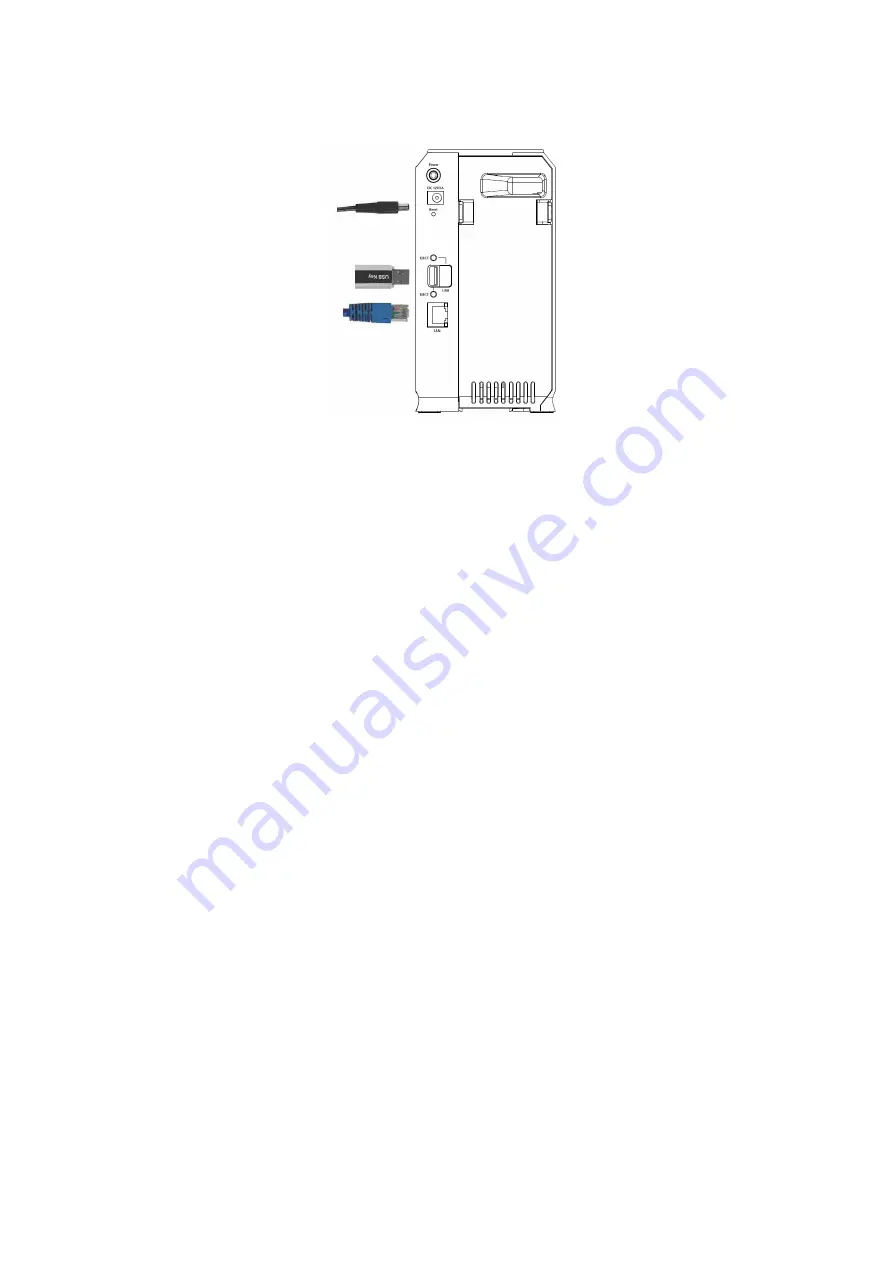
2.5 Hardware Installation
1. Connect the network cable to the NAS.
2. Connect the network cable to the LAN port on the rear of the NAS. Connect the other end
to your hub or switch.
3. Connect the USB device to USB port
4. Connect the supplied power adapter to a power outlet and plug the power cord into the
NAS's Power input on the rear panel.
5. Power
on.
6. Locate the NAS's power switch on the NAS's rear panel. Press it once to power on the
NAS.
7. The NAS's self-test.
8. The NAS will run a brief self-test (2 or 3 seconds). During the self-test, all of the NAS's
LEDs will be illuminated or flashing.
9. Booting
up.
10. When the self-test is complete, boot up will start. The Ready LED will blink continuously,
and the LAN LED will blink occasionally. Boot up should take approximately 1-3 minutes.
11. Boot up completed.
12. When the Ready LED stops blinking, and remains on, boot up is complete. If the Status
(Orange) LED stays on, or if the NAS repeatedly beeps, there is a hardware problem.
Consult the Troubleshooting section of this User Guide for possible solutions
Shutdown
To shutdown the NAS, press the power switch to start the shutdown procedure. Wait for all
LEDs turn off.
2.6 USB Devices
You can insert either USB HDD or USB Memory Disk (Flash Memory Disk) to USB port at any
time. Once the “USB 1” or “USB 2” LED on the front panel comes on and stays on, the USB
device is available for use.
For USB HDD, the NAS can recognize FAT and NTFS (Read only) file format.
Removing a USB device - Method A
1.
Press the USB Eject button on the rear panel (Eject 1 for USB 1, Eject 2 for USB 2). The
NAS will beep.
2.
Wait for the "USB" LED turn off.
11



























